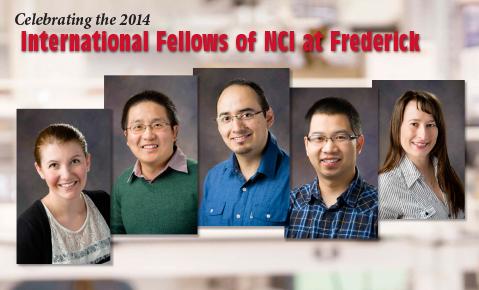Each year, the Employee Diversity Team (EDT) acknowledges members of the NCI at Frederick Community for their achievements and contributions towards the mission of facility. Historically, the team has profiled the “Women of NCI at Frederick,” but this year, the team decided to instead shed light on the diverse and successful individuals who make up the international fellows community. The EDT congratulates the winners of this year’s “International Fellows of NCI at Frederick.” Details of their achievements and unique personalities are also on display in Building 549.
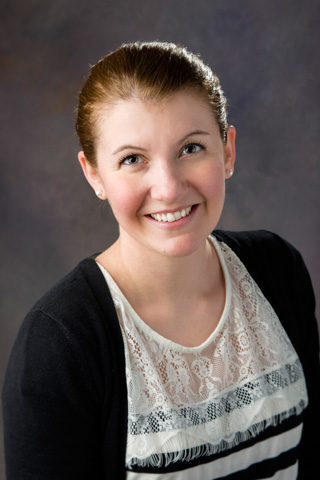 Claire Deleage, Ph.D.
Claire Deleage, Ph.D.
Postdoctoral Fellow, AIDS and Cancer Virus Program, Retroviral Immunopathology Section
Home country: Lyon, France
Years as a fellow: One
What attracted you to NIH? How are you involved in the NIH community?
I completed my Ph.D. in a little laboratory in Rennes (Brittany, France). NIH was a “dream”—like a goal that I needed to achieve as a researcher. For me, it’s the perfect environment in which to learn, create, develop, and share. I have the chance to work with amazing people and the perfect tools to accomplish my research. I learn more every day, and that’s why I chose this career.
After one year, I am totally integrated in the lab, and I really enjoy working with everyone. I am sharing my office with the sweetest and funniest coworker that I’ve ever had.
I recently submitted an abstract for an international conference, and I hope to be able to represent a part of NIH at this important event. I am trying to be involved in the numerous seminars as much as I can.
Tell us about some of your scientific interests or long-term career goals.
I started as a lab technician 10 years ago and wanted to learn more. I have completed two masters’ degrees on the influenza virus, and I switched to HIV research for my Ph.D. I have always been passionate about virology. I was born in 1981, so AIDS has always been there, on the news and around me, and I saw the evolution and the amazing findings of the research in this field over the past 30 years. I want to be a part of this fight. I believe in prevention. More than 33 million people are currently living with HIV/AIDS worldwide, and almost 80 percent of new infections occur through sexual intercourse. Understanding the first event of transmission in order to prevent it is really important to me.
Tell us about your hobbies and interests.
Painting and photography are activities that I really enjoy, but my major hobby is sports of any kind (e.g., skiing, rock climbing, running, hiking, etc.). I was a national gymnast in France, and sports are a big part of my life.
I also admit that I love cats and was happily surprised to know that my supervisor, Dr. Jake Estes, shares this same passion.
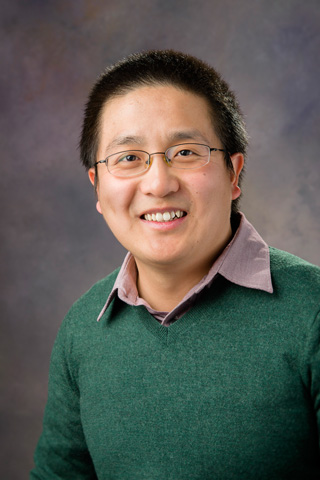 Dun Liang, Ph.D.
Dun Liang, Ph.D.
Postdoctoral Fellow, Clinical Services Program, Laboratory of Immunopathogenesis and Bioinformatics
Home country: Yunnan, China
Years as a fellow: Two and a half
What attracted you to NIH? How are you involved in the NIH community?
NIH is a vibrant capital of biomedical research and innovation. I feel fortunate to be able to work with brilliant scientists and dedicated experts all around, and to learn from them. My work environment provides me with enough space and resources to think, to practice, and to grow. An especially recent emphasis on translational research enables me to get involved in a couple of the collaborative studies between basic molecular biology, bioinformatics, and clinical research, which have truly great potential in benefitting patients.
Besides being involved in the numerous seminars and other scientific events, I also enjoyed lots of food and exercise activities, such as the Chili Cookoff at Protective Services and the Fitness Challenge.
Tell us about some of your scientific interests or long-term career goals.
My main research interest is developing genetic analysis pipelines for HIV, infectious agents, and other immunology topics. I am currently building and optimizing the following experimental and analytical pipelines: a high-throughput, ultra-sensitive HIV drug resistance genotyping assay; T cell receptor (TCR) repertoire profiling and clonotyping; capture and identification of unknown viruses in the blood of immunosuppressed patients; and accurate identification of microbes by metagenomics.
The idea is to develop accurate, sensitive, and reliable genomic tools to help researchers and clinicians characterize or diagnose pathogens and the immune system. My long-term goal is to promote novel next-generation sequencing technologies quickly from the bench side to the bedside, so patients can readily benefit from the ongoing advances of personalized medicine.
Tell us about your hobbies and interests.
As an avid swimmer, I swim five to eight kilometers every week. In the winter, I like to go skiing. I enjoy cooking. Similar to a biology experiment, I like to try new recipes and do lots of tweaking. The best part is that it can fill up your stomach even if it fails (not the terrible ones)!
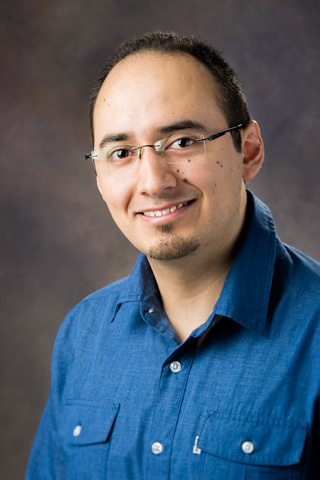 Daniel Yazmany Mendoza Villanueva, Ph.D.
Daniel Yazmany Mendoza Villanueva, Ph.D.
Postdoctoral Fellow, Laboratory of Cell and Developmental Signaling, Center for Cancer Research
Home country: Toluca, Mexico
Years as a fellow: Two
What attracted you to NIH? How are you involved in the NIH community?
Since earning my master’s degree in Mexico City, I heard that NIH was one of the biggest and well-recognized research institutes in the world because of the quality of research and funding opportunities. At that time I didn’t think that I would be working here. Then after I finished my Ph.D., I had the opportunity to come, and I knew that it was one of the best places to do a postdoc because of the exciting scientific environment and community. I have learned much more than I thought, and I really think that my training has been very successful.
I have participated as a poster judge in several events at NIH, such as postbaccalaureate day, the Spring Research Festival, and the young fellows’ colloquium, which is something that I have enjoyed a lot. Also I have participated in summer journal club in Frederick, where I helped students understand and present a paper effectively. I have presented my work in posters at the Spring Research Festival in Frederick and also at the annual NIH festival. One of the best things I have done is to be a tutor of summer students in the lab, where I work hand-in-hand with them. I recently became the representative of the Mexican community at NIH on the visiting fellows committee. I think NIH brings great opportunities for professional and personal growth.
Tell us about some of your scientific interests or long-term career goals.
My interest in science is to study breast cancer, and it’s what motivates me to keep looking to help to solve this big puzzle. My main goals are to be a principal investigator, have my own lab, and conduct breast cancer research. I know nowadays it is not easy, but it is not impossible either. I would like to have Ph.D. students and summer interns, to teach students what I learned. Also, I would like to organize science fairs for kids to introduce them to science early.
Tell us about your hobbies and interests.
I like to play basketball Wednesday nights with my friends. I like all kinds of outdoor activities like walking or riding a bike in the park, and visiting state parks or forests. I also enjoy teaching new things to the kids in boy scouts, where I am the assistant Webelos den leader. I help the kids when they need to do experiments and complete activities, and I try to interest them in science. I also enjoy watching sci-fi movies with my wife and playing with my one-year-old son.
 Wenjian Qian, Ph.D.
Wenjian Qian, Ph.D.
Postdoctoral Fellow, Chemical Biology Laboratory, Center for Cancer Research
Home country: Zhejiang Province, China
Years as a fellow: Four
What attracted you to NIH? How are you involved in the NIH community?
My graduate supervisor, who received his postdoctoral training at NIH, recommended me to Dr. Terry Burke’s group (Bioorganic Chemistry Section, Chemical Biology Laboratory) as a visiting fellow. This recommendation, as well as the great research environment and generous pay and benefits, contributed to my final decision to come to NIH.
I have participated in the annual Spring Research Festival at NCI at Frederick, and in the NCI at Frederick Fellows & Young Investigators Seminar Series. I have also given an oral presentation as part of the Frederick Faculty Seminar Series.
Tell us about some of your scientific interests or long-term career goals.
My scientific interests include the synthesis of peptides and peptide mimetics, exploring their structure-activity relationships and modes of action on target proteins and, in particular, understanding their effects on biological processes. I’m also interested in applying these agents for anticancer drug discovery.
In collaboration with biologist Dr. Kyung Lee, NCI, and structure biologist Dr. Michael Yaffe, MIT, I have developed single-digit, nanomolar affinity polo-like kinase 1 polo-box domain binding peptides as candidates for anticancer therapies.
My long-term career goal is to be a tenure track principal investigator in China.
Tell us about your hobbies and interests.
My hobbies are swimming and reading.
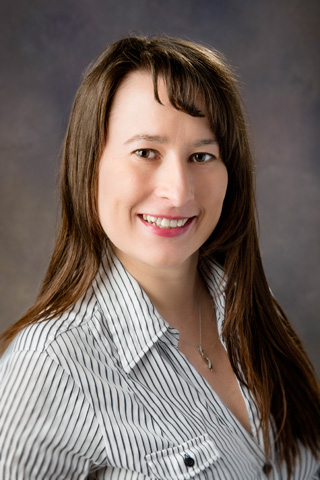 Joanna Sztuba-Solinska, Ph.D.
Joanna Sztuba-Solinska, Ph.D.
Postdoctoral Fellow, Reverse Transcriptase Biochemistry Section, HIV Drug Resistance Program
Home country: Bydgoszcz, Poland
Years as a fellow: Two and a half
What attracted you to NIH? How are you involved in the NIH community?
NIH provides a highly collaborative research environment with leading scientists in the field of RNA structure biology/biochemistry. No doubt, having the opportunity to work here has provided me with the means to fulfill my scientific interests. The environment is very progressive, which keeps me interested in what I am doing; the good work/life balance allows me to be productive while working on my research projects, but also stay in touch with my family and friends.
I used to be a member of the Fellows and Young Investigators Association (FYI), Center for Cancer Research, NCI. I helped organize and promote educational activities, such as the postdoctoral seminar series and the CCR FYI Colloquium. Currently, I am a member of the RNA Section Core of the Living Lab Structural Biology Center (NIH/NCI).
Tell us about some of your scientific interests or long-term career goals.
A major goal of my research is to elucidate the RNA conformation and function through the implementation of a number of high-throughput chemo-enzymatic methods. I explore new aspects of RNA folding and find its role in the cellular and viral life cycle exciting, as it promises the development of new and more effective strategies in fighting cancer and deadly viral diseases
My recent studies involved the investigation of Dengue virus secondary structure motifs and long-range tertiary RNA–RNA interactions that modulate the multifunctionality of viral RNA during infection. Utilizing complementary biochemical probing techniques, I studied the transitional states of HIV-2 Rev response element (RRE-2) in vitro, which provided a basis for the first three-dimensional glimpse of this critical viral RNA element. These data were published in Nucleic Acids Research, a prestigious scientific journal, as well as published as review articles in Methods in Molecular Biology (Springer Protocols), Molecular Biology International, and Journal of Visualized Experiments.
My current area of research focuses on identifying small molecules that selectively bind to cis- and trans-acting RNA structures, an important challenge in developing potent and specific RNA structure-based antiviral/anticancer therapeutics.
I am also working on a project to screen for small molecule ligands to bind therapeutically to the important RNA structure oncogene microRNA 21. MiR-21 has been shown to be upregulated in nearly all epithelial cell–derived solid tumors, including breast, pancreas, lung, stomach, prostate, colon, head and neck, and esophageal cancers. Thus, therapeutic delivery of miR-21 antagonists may be beneficial for a number of these cancers, for which no cure is currently available.
Tell us about your hobbies and interests.
My hobby is my work of course! Besides that, for the past six years I have been practicing martial arts. I hold a first-degree black belt in Kajukenbo and a first-degree black belt in American Karate. Martial arts keeps me focused on my lifelong goals.
Currently, though, I have a new and very consuming hobby—my two-month-old daughter.


